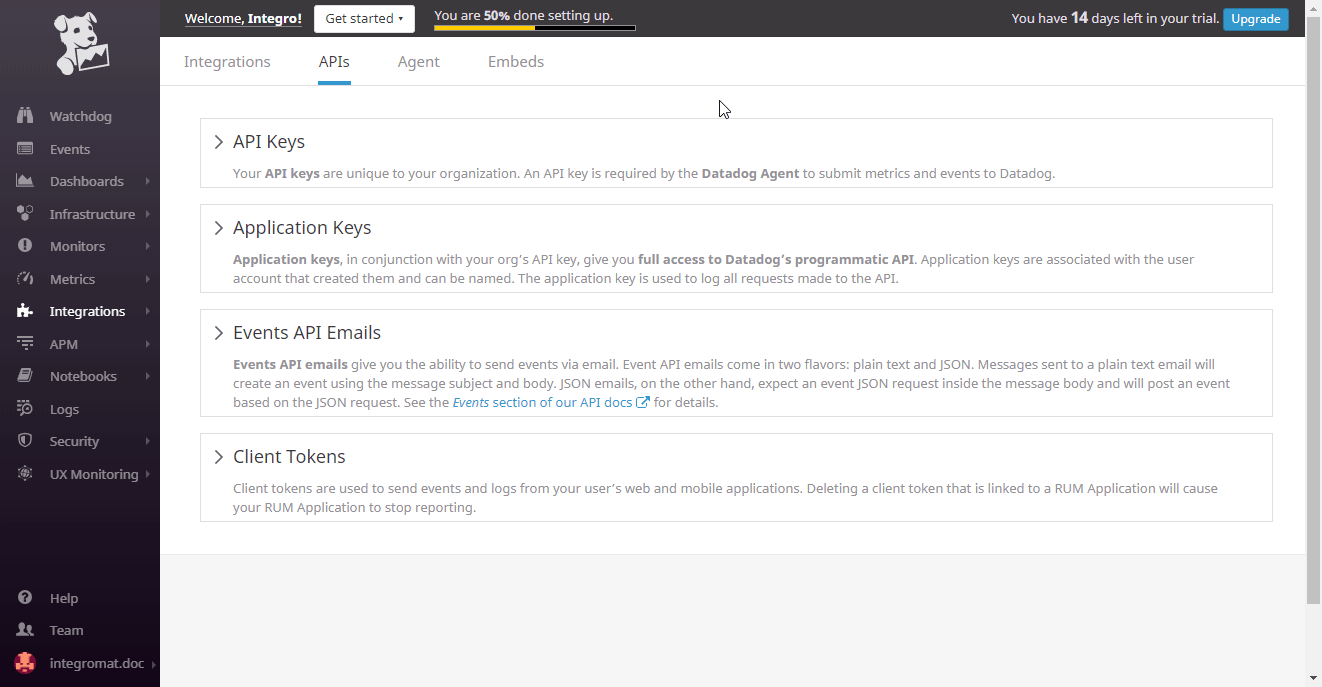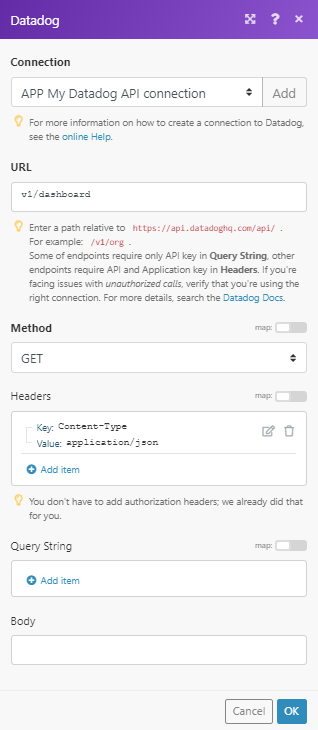Datadog¶
The Datadog modules enable you to post time-series data that can be graphed on Datadog’s dashboards or make a custom API call.
Getting Started with Datadog¶
Prerequisites
- A Datadog account
In order to use Datadog with Ibexa Connect, it is necessary to have a Datadog account. If you do not have one, you can create a Datadog account at www.datadoghq.com.
Note
The module dialog fields that are displayed in bold (in the Ibexa Connect scenario, not in this documentation article) are mandatory!
Connecting Datadog to Ibexa Connect¶
To connect your Datadog account to Ibexa Connect you need to retrieve an API Key from your Datadog account.
-
Log in to your Datadog account.
-
In the menu on the left, open Integrations > APIs.
-
Click the API Keys option and then copy the provided API Key (point the mouse over the rectangle in the Key column to unhide your API Key).

-
Repeat the same for the Application Keys option to retrieve the Application Key.

-
Go to Ibexa Connect and open the Datadog module's Create a connection dialog.
Fill the module's fields as follows:
Connection Type Select the Datadog Application option to get full access to Datadog API. Connection Name Enter the desired name for the connection. Domain Select your domain (US site or EU site). API Key Enter the API Key you have copied in step 3 (above). Application Key Enter the Application Key you have copied in step 4 (above). -
To the respective field and click the Continue button to establish the connection.
The connection has been established. You can proceed with setting up the module.
Actions¶
Post Timeseries Points¶
The module allows you to post time-series data that can be graphed on Datadog’s dashboards. The limit for compressed payloads is 3.2 megabytes (3200000), and 62 megabytes (62914560) for decompressed payloads.
Series |
Add time series you want to submit to Datadog.
|
Make an API Call¶
Allows you to perform a custom API call.
URL |
Enter a path relative to | For the list of available endpoints, refer to the Datadog API Documentation. |
Method
Select the HTTP method you want to use:
GET
to retrieve information for an entry.
POST
to create a new entry.
PUT
to update/replace an existing entry.
PATCH
to make a partial entry update.
DELETE
to delete an entry.
Headers
Enter the desired request headers. You don't have to add authorization headers; we already did that for you.
Query String
Enter the request query string.
Body
Enter the body content for your API call.
Example of Use - List Dashboards¶
The following API call returns the all dashboards in your Datadog account:
URL:
/v1/dashboard
Method:
GET

The result can be found in the module's Output under Bundle > Body > dashboards.
In our example, 3 dashboards were returned:
